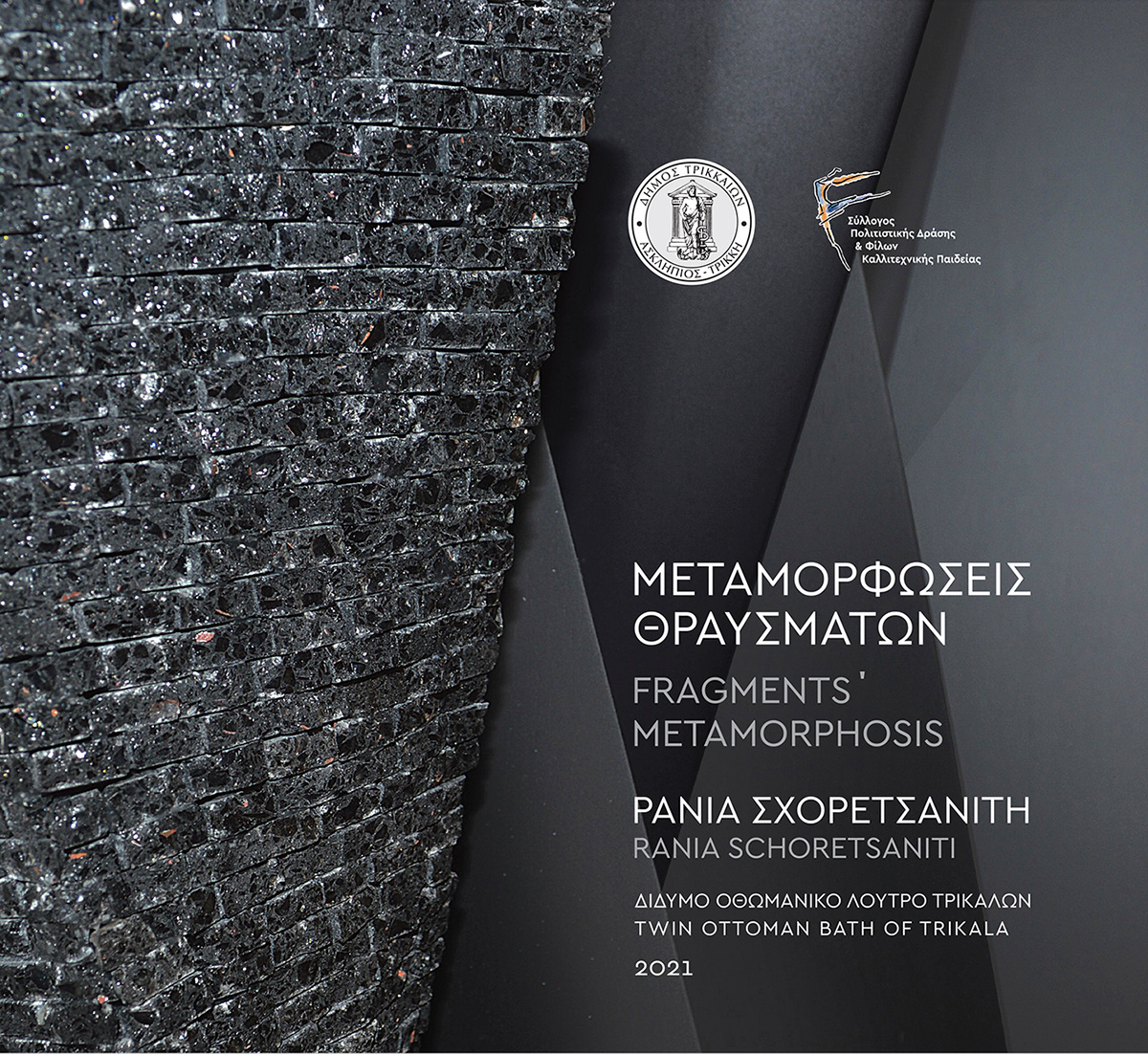Fragments’ Metamorphosis
Rania Schoretsaniti’s recent works compose an experiential, symbolic installation conceived in relation to the architecture of the exhibition space, the Twin Ottoman Baths of Trikala dating from the 16th century.
The series “Land” of 2019-2020 forms a unique artistic diary. With the use of tesserae, the artist maps her bicycle routes by the river and the old town of Trikala. She captures fleeting images, fractions of memory of the Thessalian land, along with the view of Meteora, as she sees it from her balcony. The tesserae’s natural colors reproduce the limited color range of her previous works in oil.
The landscapes are depicted through the Indirect Method of mosaics. The representation involves the notion of a revelation since the image is worked backward and appears only at the end of the process when the work is turned over. This complicated method, used in traditional Byzantine mosaics, is transformed in the hands of the artist into an original tool of abstraction allowing her to form poetic scenes that activate the imagination. Windows of dream and escape.
Each tessera, strenuously cut by the artist, functions as a structural unit, provoking dialogue with the building’s distinctive masonry. Diagonal lines and trapezoids are introduced into the mosaics, in discourse not only with the wall’s décor but also with her reliefs.
The series “Fragments” of 2020-2021, installed in an unorthodox manner as sculptures inhabiting the wall, are conglomerations of wooden units depicting trapezoids, that appear as if twisting, offering views in a variety of perspectives and sizes. In the past, these units were covered entirely by fabrics, producing compact sculptural volumes that hid the interior structure of the works. Now the artist removes the outer cover and exposes the bare skeleton, painted in black, for the first time.
With the revelation of the substructure, the notions of full and void are introduced, contributing to the perpetual metamorphosis of the works. The geometrical shapes merge and separate depending on the viewer’s position in space, transmuting the aesthetics of the compositions and turning the wall into an intricate part of them. This transformation is enhanced by the mutation of colors. The granite, lining sections of the wooden units, reflects various hues of black, displaying microscopic fragments of glass that form part of its natural substance. Schoretsaniti transforms the process of perception into a visual game that also necessitates bodily involvement.
The trapezoids morphologically refer to ladders that appear in many of her works as well as in the mosaics. This motif is a reference to John Climacus’ ladder, a codified narrative on the gradual spiritual ascent, human transcendence, and the path from the earthly to the divine.
An older video of 2016 entitled “Sea” forms one more unique record of her experiences and feelings. The allegorical graph of the psyche is an abstract comment on the fluidity of human existence. It demonstrates the need for mental uplifting and purification of the soul. A favorite topic for Schoretsaniti, it now acquires a new dynamic, as it becomes the conceptual thread of an illusionary exhibition, which unfolds into an a priori space of catharsis.
Bia Papadopoulou
Art Historian, Curator
General Secretary AICA Hellas

